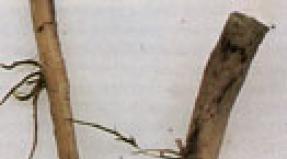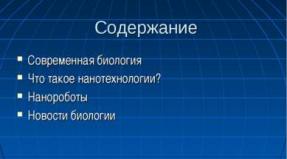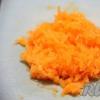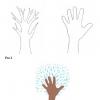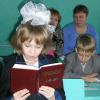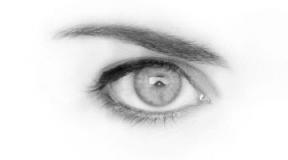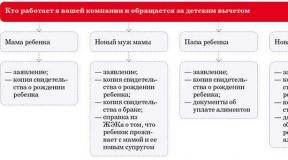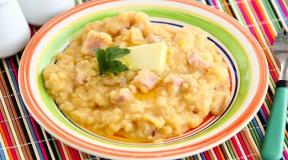Rules for admission to the Military Space Academy. Mozhaisky Academy: pros and cons Admission to the Mozhaisky University
lieutenant general
O.FROLOV
ADMISSION RULES
TO THE MILITARY SPACE ACADEMY
NAMED AFTER A.F. MOZHAYSKYMilitary Space Academy named after A.F. Mozhaisky, being a polytechnic university of the Ministry of Defense of the Russian Federation, trains highly qualified officers with higher military-special education for the Space Forces, other branches, branches of the Armed Forces and law enforcement agencies of the Russian Federation.
Those who graduate from the academy are awarded the military rank of “lieutenant” and are issued a diploma in the following specialties:
AT THE MILITARY INSTITUTE ACADEMY
(TOPOGRAPHICAL):
- cartography;
- astronomical geodesy;
- aerial photogeodesy.
Phone for inquiries: 347-97-07
AT THE MILITARY INSTITUTE ACADEMY
(SYSTEMS AND MEANS OF SUPPORT FOR TROOPS) Pushkin:
automated systems;
- power supply;
Phone for inquiries: 363-59-46
at the Faculty of Launch Vehicle Designs
AND SPACE VEHICLES:
- spacecraft and upper stages;
- rocket science;
- launch and technical complexes of rockets and space
devices;
- ballistics;
- cryogenic technology and temperature control systems for rockets and
spacecraft;
- pedagogy and psychology.
At the Faculty of CONTROL SYSTEMS AND
COMPUTING EQUIPMENT:
- modeling and research of operations in organizationaltechnical systems;
- aircraft control systems;
- computers, complexes, systems and networks;
- computer software and
automated systems;
- automation of technological processes and production;
- optical and optical-electronic space equipment
devices.
At the Faculty of RADIO ELECTRONICS:
- radio engineering and optical-electronic space systemscomplexes and uniform time services;
- on-board radio systems of spacecraft and
launch vehicles;
- electronic warfare equipment;
- information and control complexes of radio-electronic
systems.
At the Faculty of Engineering and Technology:
- industrial and civil construction;- technical systems and life support systems;
- heat, water and gas supply and ventilation;
- power supply.
At the Faculty of INFORMATION COLLECTION AND PROCESSING:
- optical-electronic devices and systems;- meteorology;
- computer security;
- information systems and technologies;
- radio-electronic systems;
- complex radio-electronic systems;
- electronic instruments and devices.
At the Faculty of AUTOMATED SYSTEMS
CONTROLS AND COMMUNICATIONS:
- metrology and metrological support;
- technical support of automated systems
management;
- communication networks and switching systems;
- software for automated systems
management;
- automated information processing systems
and management.
The duration of study at the academy is 5 years.
The academy accepts males, and by specialty «» And female persons, citizens of the Russian Federation with secondary (complete) general or secondary vocational education, from among:
citizens who have not served in the military – aged 16 to 22 years;
citizens who have completed military service and military personnel undergoing military service upon conscription - until they reach the age of 24 years;
military personnel performing military service under a contract (except for officers) - until they reach the age of 24 years.
Age is determined by the state at the time of entry into the academy.
Persons from among the citizens who have and have not undergone military service, who have expressed a desire to enter the academy, submit applications to the military commissariat at their place of residencebefore April 1 of the year of admission.
The application shall indicate: last name, first name, patronymic, year, day and month of birth, address of residence, name of the academy and specialty (for females, the specialty of training " software for computer technology and automated systems") in which the candidate wishes to study. The application is accompanied by: a copy of the birth certificate, an autobiography, a reference from the place of work or study, a copy of the document on secondary education (students submit a certificate of current academic performance; persons who have completed the first and subsequent years of educational institutions of higher professional education submit an academic certificate), three photographs (without headdress) measuring 4.5 x 6 cm.
If there is no order at the military registration and enlistment office, you must submit an application to the academy’s admissions committee.
For candidates entering the academy, military commissariats, before May 1 of the year of admission, issue access to information constituting state secrets.
A passport, military ID or identity card of a citizen subject to conscription, an original document of secondary education, a certificate of Unified State Examination results are presented by the candidate to the academy's admissions committee upon arrival. Certificates of Unified State Examination results issued both in the subject of the Federation in which the academy is located and in other subjects of the Federation are equivalent. If a certificate of Unified State Examination results cannot be presented at the time of registration, the candidate submits duly certified copies of a certificate of Unified State Examination results, filling in the appropriate fields in the application for admission indicating the reason for the absence of a certificate. The candidate must submit original documents on the results of the Unified State Exam within three working days after the end of the entrance examinations.
Persons from among citizens who have and have not undergone military service, family members of military personnel or civilian personnel of the Armed Forces undergoing military service (working) in groups of troops (military units) stationed outside the Russian Federation may submit applications with the attachment of the above documents, as well as medical examination cards addressed to the head of the academy until May 20 of the year of admission.
Documents for candidates, a certificate of access to information constituting state secrets, medical examination cards and professional psychological selection cards are sent by district military commissariats to the academy before May 20 of the year the candidates are admitted.
Based on the consideration of the candidates’ documents received, the Academy’s admissions committee makes a decision on their admission to professional selection.
The selection committee informs candidates through military commissariats about the time and place of arrival of candidates for professional selection before June 20 of the year of admission to study.
Candidates entering the academy are provided with free travel, food, accommodation and medical care.
Travel documents are issued by military commissariats at the place of residence.
Military personnel who wish to enroll in the academy, up to April 1 of the year of admission upon command, submit a report addressed to the commander of the military unit, which indicates: military rank, last name, first name, patronymic, position held, year and month of birth, education, name of the academy and specialty in which they wish to study.
Attached to the report: a copy of the document (certificate, certificate, certificate, diploma) of secondary education, three certified photographs (without headdress) measuring 4.5 x 6 cm, autobiography, characteristics, service card, medical examination card, professional psychological selection card ,
Lists of pre-selected candidates from among the military personnel and the documents listed above are sent to the academy by May 15 of the year of admission.
Military personnel pre-selected for admission to the academy are by June 1 are sent to the All-Russian Academy named after A.F. Mozhaisky for professional selection. They undergo twenty-five-day training camps to prepare for entrance exams.
An original document on education, and for candidates who have completed the first and subsequent courses of educational institutions of higher professional education that have state accreditation, in addition, an academic certificate, are presented upon arrival at the academy.
Candidates who do not present the above documents will NOT be allowed to take the entrance exams.
PROCEDURE FOR PROFESSIONAL SELECTION OF CANDIDATES FOR ADMISSION
TO THE ACADEMY AS CADETS
Professional selection of candidates for enrollment as cadets is carried out by the academy’s admissions committee and includes:determining the suitability of candidates for admission to the academy for health reasons;
assessment of the level of general educational preparedness of candidates;
assessment of the level of physical fitness of candidates.
The Academy's admissions committee carries out work on the professional selection of candidates from July 1 to July 30 of the year of admission.
The determination of the category of professional suitability and individual psychological qualities is carried out in order to identify in candidates specific personal qualities and individual characteristics necessary for successful training at the academy, mastery of the chosen military specialty and the effective application of acquired knowledge in military professional activities in accordance with the requirements of the order of the Ministry of Defense of the Russian Federation of 2000 . No. 50.
To determine physical fitness, candidates undergo a practical test in accordance with the requirements of the Order of the Ministry of Defense of the Russian Federation of 2000. No. 631 (NFP-2001) according to the following regulatory requirements:
for males
for females
*Complex strength exercise is performed for 1 minute. First 30 sec. maximum number of forward bends from a supine position. Second 30 sec. the maximum number of flexions and extensions of the arms while lying down.
LEVEL ASSESSMENT PROCEDURE
GENERAL EDUCATIONAL PREPAREDNESS
Subjects taken for examination:mathematics (written);
physics (written);
Russian language (written, presentation).
For applicants to the specialty “Psychology and Pedagogy” the following subjects are taken for examination:
history of Russia (orally);
biology (oral);
Russian language (written, essay).
The exam results are determined by grades: 5 (excellent), 4 (good), 3 (satisfactory), 2 (unsatisfactory).
Unified State Exam results are counted in the following subjects: mathematics, physics and Russian language. The core entrance test is mathematics.
When determining the level of general educational preparedness of candidates entering the specialty “Psychology and Pedagogy,” the results of the Unified State Exam are counted in the subjects: history of Russia, biology and the Russian language. The main entrance test is biology.
The USE results for each subject are translated into a scale comparable to the grading system at the academy, since admission is based both on the USE results and on the results of entrance tests conducted at the academy.
The results of the current year's Unified State Examination are accepted as the results of entrance examinations.
In case of doubt about the reliability of the data contained in the certificate of Unified State Exam results submitted by the candidate, and in order to confirm the candidate’s participation (non-participation) in the Unified State Exam in May-June of the current year, the selection committee reserves the right to make a request to the Federal database of certificates of Unified State Exam results . A candidate who has provided false information participates in the competition with the actual number of points that he received when passing the Unified State Exam in the relevant general education subject.
From testing knowledge in general education subjects candidates are exempt from:
military personnel who underwent conscription military service, while performing tasks in conditions of an armed conflict of a non-international nature in the Chechen Republic and in the immediately adjacent territories of the North Caucasus, classified as a zone of armed conflict;
graduates of Suvorov military schools who were awarded a medal (gold or silver) “For special achievements in learning”;
persons who graduated with medals (gold or silver) “For special achievements in learning” from educational institutions of secondary (full) general or primary vocational education, as well as persons who graduated with honors from educational institutions of secondary vocational education, if the interview results are positive;
other citizens who, in accordance with the legislation of the Russian Federation, are exempt from testing knowledge in general education subjects upon admission to universities.
Candidates entering training majors taking into account the results of the Unified State Exam, who graduated with medals (gold or silver) “For special achievements in learning” from educational institutions of secondary (full) general or primary vocational education, as well as candidates who graduated with honors from educational institutions of secondary vocational education , pass professional entrance tests (profile tests) in general education subjects.
MILITARY SPACE ACADEMY NAMED AFTER A.F. Mozhaisky ANNOUNCES THE RESULTS OF A RECRUITMENT OF CADETS IN ALL SPECIALTIES OF HIGHER PROFESSIONAL EDUCATION IN JULY 2017 INFORMATION FOR THOSE WISHING TO APPLY TO STUDY In 2017, the A.F. Mozhaisky Military Space Academy recruited cadets in all training specialties with a total number of 1,100 people based on: For higher professional education programs - about 1,050 people, of female candidates - about 50 people. There is no enrollment for secondary vocational education programs. In order to familiarize themselves with the conditions of training, life and accommodation of cadets, the Academy named after A.F. Mozhaisky traditionally organizes meeting days between the command and teaching staff during the school holidays in November, January, February and March Academy with those wishing to enroll in higher and secondary vocational education programs.
BARRACKS OF JUNIOR COURSES Information and leisure room Sleeping area Washroom Sports corner DORMSEL FOR SENIOR COURSES AND FEMALE MILITARY SERVICES Sleeping place in the room Recreation area Sports corner Washroom ACADEMY DINING Distribution Dining room Wash area courts Cutting shop ACADEMY CLUB Stage Museum ...
15.04.2017
Professional selection of candidates is carried out by the admissions committee from July 2 to July 21, 2018 in order to determine the candidates’ ability to master educational programs at the appropriate level and includes: a) determining the suitability of candidates for admission to the Academy for health reasons; b) determining the category of professional suitability of candidates based on their socio-psychological study, psychological...
18.07.2016
In 2017, the A.F. Mozhaisky Military Space Academy recruited cadets in all training specialties with a total number of 1,100 people based on: For higher professional education programs - about 1,050 people, of female candidates - about 50 people. There is no enrollment for secondary vocational education programs. In order to familiarize yourself with the conditions...
Symbols of the Mozhaisky Academy
Mozhaisky Academy is a military university in St. Petersburg, serious and very popular among applicants. Its distinctive feature is that it trains personnel primarily for the aerospace forces. But other branches of the military and law enforcement agencies also draw personnel reserves from these walls.
Is it worth targeting Mozhaika? Let's figure it out.
In this article I will not describe the official regalia of the Academy, the number of students and teachers, or faculties. You can find all this yourself on the official website. I’m interested in something else: is it worth enrolling in Mozhaika at all, the pros and cons of this decision.
So, they are waiting for you:
High competition
To put it simply, consider that for any faculty there is competition for approximately 2 people per place, a little more or less.
Competition in Mozhaika:
- For girls - 10 people per place
- for boys 1.5 - 3.5 (on average 2) people per place.
Please note: among girls the competition is limited to 10 people per place. And every year more and more girls come to the entrance examinations.
Which faculty has the biggest competition?
Oddly enough, to the Faculty of Secondary Professional Education (3.5 people per place). SPO is a faculty of secondary vocational education, with a training period of 2 years and 10 months. As they would say in civilian life, vocational school. After him they go to serve in the positions of surveyor or topographic surveyor, technician, calculation and shift supervisor. And all this with the rank of warrant officer. Agree, the parents of these children dream of something more.
The Academy administration suggests not focusing on all these numbers, but focusing on the admission itself. Think about your own scores, and not about the number of applications submitted per place.

What physical (physical training) scores can you realistically get into?
When entering, the most important thing is the category of professional suitability. It is used to rank places on the competitive list, and the sums of points on the Unified State Examination and the Physical Examination do not influence so much. In reality, for boys it is possible to enter with physical fitness scores from 25 to 100, but for girls they need more, because the competition is higher.
Upon admission, three exercises are taken:
- Boys - 3 km cross-country run, 100-meter run and pull-ups.
- Girls - running 1 km, 100 m and raising the body from a lying position.
You can get a maximum of 100 points in physical training if, based on the results of 3 exercises, you get from 195 to 300 points (the score is added up for all three exercises). On the other hand, you can apply with minimal points - for physical training it is 25 points.
What USE scores can you realistically get into?
In fact, for admission it may be enough for the Unified State Exam scores to reach the lower limit. This:
- Russian language 36
- physics 36
- math 27
- geography 37
Why is that? Your final results are determined primarily by the category of professional suitability. If you received a category (the best), then you will be ahead of those guys in the lists whose Unified State Examination is much better.
But that's not all. Applicants will be subject to a psychologist and testing.
Testing
Tests are divided into groups. There will definitely be tests aimed at identifying a person’s personal characteristics (they will check the level of balance, normality - after all, they will put a weapon in your hands) and motivational tests (on the desire to serve in the army and obey discipline, superiors and regulations).
If the applicant has personal achievements - for example, a GTO badge, prizes in local Olympiads, sports categories, etc. - here you need to show documents and include information in the application form. These achievements do not give points directly to the Unified State Exam, but they affect the passage and results of testing by a psychologist.
Strict selection and subsequent difficulties
Get ready for difficulties of all kinds. They are connected with military training in general, and with the Mozhaisk Academy in particular.
Admission restrictions
For example, children often take physical training in the rain, and if someone gets sick, they may not pass the medical examination (MEC), which has deadlines (you may simply not have time to recover).
Or a child travels with a slight flat foot, and the medical board adds a diagnosis of arthrosis - and that’s it, he’s unfit.
Once enrolled, the cadets will also face many restrictions on their freedom. And you need to be mentally prepared for this in advance.
 Oath 2017 at the Mozhaisky Academy
Oath 2017 at the Mozhaisky Academy - After passing exams and tests, and before the start of training, cadets are no longer allowed to go home.
- During the introductory selection, living conditions were spartan (almost daily rain and leaky tents, warm showers once a week, theft of personal and valuable things).
- The use of social networks and communication on the Internet is limited.
- Cadets of the Mozhaisky Academy are prohibited from driving a car for the entire period of study at the Academy.
Is it enough, or do you need more? Believe me, there will be many restrictions, starting with hairstyles and behavioral habits.
Vaccinations
In Russia there is a national vaccination calendar, where infants begin to be vaccinated in the maternity hospital.
When entering Mozhaika (as well as any other military university), the applicant must have a vaccination card with notes on all vaccinations prescribed by the calendar. If they are not there, do them, and the sooner the better, because many vaccinations require repeated vaccination.
You won’t be accepted without vaccinations (they will be considered unfit for admission), and it doesn’t matter whether you were allergic, or your mother refused vaccinations for ideological reasons.
Expulsions based on discipline
Are pranks and disobedience possible? If you perform well, you can be expelled only for behavior. And by the way, according to the cadets, in recent years it has been customary to expel students for any offense. You understand how offensive this will be.
On the other hand, studying here has a lot of advantages.
Pros of Mozhaisky Academy
Large selection of specialties
Across all programs, there are about 40 specialties in which training is provided that will satisfy even the discerning student. And there’s nothing even to say about the military space fleet, for which Mozhaika is the source of personnel. In general, everyone will find a specialty to their liking.
For example, the specialty of specialist training.
 Specialties for specialty, Mozhaika, 2018
Specialties for specialty, Mozhaika, 2018 Really do it without cronyism
It’s quite possible to do it without cronyism. You just need to do well in the entrance examinations and demonstrate decent personal qualities (the role of the psychologist in the selection process is really important, not just for show).
According to one of the fathers of applicants who entered in 2017, if there was an opportunity to put in a word, he would definitely take advantage, but there was no such opportunity, and the son entered quite successfully on his own.
The quality of education
Most graduates, including recent years, are satisfied with their education.
A good academy and one of the few where they teach what you need! But the discipline is very strict, they expel you for any mistake!
Feedback from cadet 2017
Graduates have a real opportunity to rise to high ranks and positions. For example, among the graduates are the former Deputy Minister of Defense (Vladimir Popovkin), the famous cosmonaut pilot (Yuri Sharygin), Lieutenant General and Chief of the General Staff (Stanislav Suvorov) and many other famous people.
As a start to their career, all graduates will receive assignment to serve as an officer.
As you can see, there is where to start and where to strive.
Living conditions
During basic training, cadets live in barracks. The living conditions are quite acceptable, everything is clean and suitable for living.
 Mozhaisky Academy. Barracks
Mozhaisky Academy. Barracks A good canteen (according to reviews, the food is quite decent), the barracks are being renovated.
 Dining room at the Mozhaisky Academy, St. Petersburg
Dining room at the Mozhaisky Academy, St. Petersburg
The presented photos from the official materials of the Academy demonstrate what the cadets will have to face.
Cultural leisure
Don't forget that this is St. Petersburg, the cultural capital of Russia. The Academy is “friends” with all sorts of museums, exhibitions, and theaters, and students regularly and in an organized manner visit cultural places.
In general, the child will not only receive a military specialty, but will also have cultural leisure in St. Petersburg, which may be of particular interest to children from the outback (and their parents).
Summary
We will not take into account those who have a negative attitude towards the army and military education, and who were not accepted, or were sent home after training. The rest of the reviews about Mozhaisk Academy are mostly positive.
If we summarize the reviews of Mozhaika applicants and cadets, we get the following picture.
They speak positively about:
- quality of education
- barracks and living conditions
- cultural and organized leisure
Neutral or good:
- nutrition
Negative:
- strict selection upon admission
- poor living conditions in the camp for applicants
- too strict discipline, with expulsion for offenses
- old part of the training facilities
I hope you now have a better understanding of what you're up against.
If you like St. Petersburg, you have chosen a military career for yourself, and one of the faculties of Mozhaika appeals to you - go for it. Moreover, you will be able to enroll in another university at the same time, or enroll while already studying in civilian life - upon admission they will ask for a copy of the certificate, the original can be picked up and brought back after the order.
MINISTRY OF DEFENSE OF THE RUSSIAN FEDERATION MILITARY SPACE ACADEMY NAMED AFTER A.F. MOZHAISKY
NAMED AFTER A.F. MOZHAYSKY IN 2015
St. Petersburg - 2015

APPROVED by the Head of the Military Space Academy named after A.F. Mozhaisky, Major General
M.Penkov
" " September 2014
RULES FOR ADMISSION TO THE MILITARY SPACE ACADEMY
NAMED AFTER A.F. MOZHAYSKY
IN 2015
I. General provisions
1. These Admission Rules 1 regulate the admission of citizens of the Russian Federation to the A.F. Mozhaisky Military Space Academy2 for training
V as cadets in educational programs of higher education - specialty programs, as well as in educational programs of secondary vocational education (hereinafter referred to as educational programs) and disclose the requirements for candidates entering the Academy.
2. Admission to the Academy is carried out on a competitive basis. The terms of the competition must guarantee respect for the right to education and enrollment in training of candidates who are the most capable and prepared to master educational programs, as well as those who most meet the requirements for the professional suitability of candidates.
3. In 2015, candidates for study at the Academy are accepted for 10 faculties and a branch 3. Admission to training is carried out for the first year.
1 Admission rules were developed in accordance with Federal Law of December 29, 2012 No. 273-FZ “On Education in the Russian Federation”, Instructions on the conditions and procedure for admission to military educational institutions of higher professional education of the Ministry of Defense of the Russian Federation, approved by Order of the Minister of Defense of the Russian Federation dated April 24, 2010 No. 100.
2 Further in the text of these Admission Rules, unless otherwise stated, for brevity they will be referred to as: Military Space Academy named after A.F. Mozhaisky - Academy; branch of the Military Space Academy named after A.F. Mozhaisky (Yaroslavl) - branch; presidential cadet, Suvorov military, Nakhimov naval, military music schools and cadet (naval cadet) corps - Suvorov military schools; citizens of the Russian Federation - citizens; candidates entering training - candidates.
3 Information about the Academy, its faculties and branches, as well as about the admission of candidates for the first year is posted on the website of the Ministry of Defense of the Russian Federation http://www.vka.mil.ru.

4. Admission of cadets to the Academy for training in educational programs is carried out for military specialties (specializations) of training corresponding to the specialties of higher education and secondary vocational education, respectively.
The list of specialties for which admission is carried out in accordance with the license for the right to conduct educational activities by the Academy is presented in the tables.
Faculty name, code and specialty name
Specialties of higher education
1 faculty (aircraft design)
05.24.01 – Design, production and operation of missiles and rocket-
space complexes
05.24.04 – Navigation and ballistic support for the use of space
2nd Faculty (control systems for rocket and space complexes)
05/24/06 – Aircraft control systems
05.27.01 – Special organizational and technical systems
3rd faculty (radio-electronic systems of space complexes)
11.05.04 – Infocommunication technologies and special communication systems
4th faculty (ground-based space infrastructure)
05/13/01 – Heat and electricity supply for special technical systems and facilities
05/16/01 – Special life support systems
5th faculty (collection and processing of information)
05.05.01 – Special purpose meteorology
05.12.01 – Electronic and optical-electronic devices and special systems
appointments
11.05.02 – Special radio systems
6th faculty (information support and computer technology)
10.05.01 – Computer security
11.05.01 – Radio-electronic systems and complexes
appointments
7th faculty (topogeodetic support and cartography)
05.05.02 – Military cartography
05/27/02 – Metrological support of weapons and military equipment
8th Faculty (Rocket and Space Defense)
11.05.02 – Special radio systems
9th Faculty (automated troop control systems)
05/09/01 – Application and operation of automated systems for special
appointments

11.05.01 – Radio-electronic systems and complexes
05/09/01 – Application and operation of automated systems for special
appointments
Specialties of secondary vocational education
Faculty of Secondary Vocational Education
02/21/08 – Applied geodesy
02/11/02 – Maintenance and repair of radio-electronic equipment (according to
industries)
02/11/04 – Radio engineering complexes and space control systems
aircraft
02/09/01 – Computer systems and complexes
02/27/01 – Metrology
02/08/07 – Installation and operation of internal plumbing fixtures,
air conditioning and ventilation
210414 – Maintenance and repair of radio-electronic equipment (according to
industries)
5. The Academy provides training only for full-time education on a budgetary basis.
The duration of study for educational programs of higher and secondary vocational education is 5 years and 2 years 10 months, respectively.
6. The number of candidates (including female candidates) to be enrolled as cadets in the first year of the Academy in each specialty is determined by calculations for staffing the first year of the Academy with a variable composition.
7. Graduates of the Academy with higher education are awarded the military rank of “lieutenant”, the qualification “specialist” and are issued a state diploma in their specialty of training.
Graduates of the Academy with secondary vocational education are awarded the military rank of “sergeant” or “warrant officer”, the qualification “technician” and are issued a state diploma in their training specialty.
8. Enrollment of cadets in the Academy is preceded by the stages of preliminary and professional selection of candidates.
II. Requirements for candidates
9. Citizens of the Russian Federation who have state-issued documents on secondary general, secondary vocational education (based on secondary general education) are considered as candidates for training at the Academy, from among:
citizens aged 16 to 22 years who have not served in the military;
citizens who have completed military service and military personnel undergoing military service upon conscription - until they reach the age of 24 years;
citizens from among military personnel undergoing military service under a contract (except for officers), entering for higher education - until they reach the age of 25, for secondary vocational education - until they reach the age of 30.
Age is determined as of August 1 of the year of admission. 10. The following citizens cannot be considered as candidates:
V in respect of whom an inquiry or preliminary investigation is underway or a criminal case in respect of which has been transferred to court;
V in respect of whom a guilty verdict has been passed and to whom punishment has been imposed;
having an unexpunged or outstanding conviction for committing a crime;
those who have served a sentence of imprisonment; deprived for a certain period of time by a decision that has entered into legal force
court the right to hold military positions for a specified period.
III. Procedure for pre-selection of candidates
11. Preliminary selection of candidates from among citizens,those who have and have not undergone military service, carried out by military commissars of the constituent entities
of the Russian Federation, conscription commissions created in municipal districts, urban districts and in the intracity territories of federal cities, heads of Suvorov military schools, and among military personnel - commanders of military units (formations).
Pre-selection activities are carried out for the purpose of sending candidates to entrance examinations who meet the requirements provided for in paragraph 9 of these Admission Rules, and include determining the suitability of candidates for training:
by having citizenship of the Russian Federation; by level of education; according to the age; for health;
by level of physical fitness; according to the category of professional suitability.
12. Persons from among citizens who have and have not undergone military service,
those who have expressed a desire to enter the Academy, before April 1 of the year of admission, submit applications to the department of the military commissariat of the constituent entity of the Russian Federation (municipal) at their place of residence (graduates of Suvorov military schools submit an application addressed to the head of the school in which they are studying).
Citizens living in military units stationed outside the Russian Federation submit applications to the head of the Academy before May 20 of the year of admission.
Military personnel wishing to enroll in training at the Academy must submit a report to the commander of the military unit before March 1 of the year of admission.
13. The application of candidates indicates: last name, first name, patronymic, date of birth, education, address of residence, name of the Academy (branch), level of professional education, specialty in which he wishes to study. In the report of candidates from among the military personnel, in addition to the above, the following shall be indicated: military rank and position held, and instead of the address of residence - the name of the military unit.
TO The application (report) is enclosed: photocopies of a birth certificate and a document proving identity and citizenship, an autobiography, a reference from a place of work, study or service, a photocopy of a document on education or education and qualifications of the sample established by the federal executive bodies performing the functions of development of public policy and legal regulation in the field of education, three certified photographs measuring 4.5x6 cm, service card of a military personnel.
14. Candidates are granted access to information constituting state secrets before May 1 of the year of admission.
15. A passport, military ID or certificate of a citizen subject to conscription for military service, the original document on education, as well as the original documents granting a preferential right to admission to study, established by the legislation of the Russian Federation, are presented by the candidate to the admissions committee of the Academy upon arrival, but no later than one day before the meeting of the admissions committee to make a decision on admitting the candidate.
16. Documents for candidates from among citizens who have and have not undergone military service , listed in paragraph 13 of this Instruction, medical examination cards, professional psychological selection cards and access to information constituting state secrets, military commissars of the constituent entities of the Russian Federation (heads of Suvorov military schools) send to the Academy (branch) until May 20 year of admission.
Citizens living outside the Russian Federation, where there are no military units of the Russian Federation, no later than June 28 year of admission
it is necessary to arrive at the Academy (branch) with a document on education and documents proving identity and citizenship, for consideration by the admissions committee of candidates for admission with the preparation of the necessary documents and admission to professional selection. Reimbursement for travel expenses from the place of residence, and in case of non-admission, and back, is made by the Academy.
17. Documents of military candidates listed in paragraph 13 of this Instruction, medical examination cards, professional psychological selection cards, access to information constituting state secrets, and for candidates from military personnel serving under contract, and personal files are sent by commanders military units before May 1 of the year of receipt at the headquarters of the formations, and after their consideration
(preliminary selection) are sent by May 15 of the year of admission to the Academy (branch).
18. The Academy’s admissions committee, based on consideration of the candidates’ documents received, makes a decision on their admission to professional selection, which is communicated to the departments of the military commissariats of the constituent entities of the Russian Federation (municipal) at the place of residence of the candidates, Suvorov military schools before June 20 of the year of admission, indicating the time and place conducting professional selection or reasons for refusal.
IV. The procedure for professional selection of candidates
19. Professional selection of candidates is carried out by the Academy's admissions committee during the period from July 1 to July 30 of the year of admission in order to determine the ability of candidates to master educational programs of the appropriate level and includes:
a) determining the suitability of candidates for admission to the Academy for health reasons;
c) entrance examinations, consisting of an assessment of the level of general educational preparedness (only for candidates entering higher education programs) and an assessment of the level of physical preparedness of candidates.
20. Determining the suitability of candidates for admission to the Academy for health reasonscarried out in accordance with the Regulations on Military
medical examination approved by Decree of the Government of the Russian Federation of 2013 No. 565, Instructions on the procedure for conducting military medical examination and medical examination in the Armed Forces of the Russian Federation, approved by order of the Minister of Defense of the Russian Federation dated August 20, 2003 No. 200.
The results of the medical examination of candidates are announced no later than one day after the military medical commission issues an opinion on the candidate’s state of health. If a candidate is declared unfit for health reasons to enter the Academy, he has the right to receive explanations and recommendations from a medical specialist.
21. Determination of the category of professional suitability is carried out in accordance with the Guidelines for professional psychological selection in the Armed Forces of the Russian Federation, approved by order of the Minister of Defense of the Russian Federation dated January 26, 2000 No. 50, in order to identify in candidates specific personal qualities and individual characteristics necessary for successful training at the Academy, mastering the chosen specialty and effective application of acquired knowledge in military professional activities.
Determining the professional suitability of candidates for training in
The Academy is carried out based on the results of professional psychological selection, which is carried out in two stages: main and final.
The main method of psychological and psychophysiological examination is a professional psychological test (testing) using technical means.
At the final stage, based on the results of socio-psychological study, psychological and psychophysiological examination, one of the following conclusions is made about the professional suitability of candidates to study at the Academy:
“recommended” – the second category of professional suitability; “conditionally recommended” – the third category of professional suitability; “not recommended” is the fourth category of professional suitability. Candidates classified in the first three professional categories
suitability are considered to have passed professional psychological selection. Candidates classified in the fourth professional category
suitability are considered to have not passed professional psychological selection and are not allowed to undergo further professional selection.
The issuance of a conclusion on the category of professional suitability of candidates is completed no later than one day before the end of the professional selection of candidates.
Assessment of the level of general educational preparedness of candidates,
applicants for specialty programs are organized in general education subjects in accordance with the list of entrance examinations approved by the Ministry of Education and Science of the Russian Federation. Assessment of the level of general educational preparedness of candidates for admission to the Academy for study in educational programs of higher education is carried out based on the results of the Unified State Exam (hereinafter referred to as the Unified State Exam),
received in 2012 – 2015.
The list of entrance tests does not differ for admission to the relevant specialties at the academy and the branch, as well as for admission of candidates entering on the basis of secondary vocational education and candidates entering on the basis of secondary general education.
List of entrance tests for accepting candidates:
for training in higher education specialties (with the exception of the specialties “Military Cartography” and “Special Purpose Meteorology”):
1) mathematics (profile);
2) physics;
3) Russian language;
for training in higher education specialties “Military cartography”
And "Special purpose meteorology":
1) geography (profile);
2) mathematics;
3) Russian language.
To assess the level of general educational preparedness of candidates, the minimum number of Unified State Exam points in general education subjects approved by the Minister of Defense of the Russian Federation is used as the minimum number of points:
mathematics – 27 points; Russian language – 36 points; physics – 36 points; geography – 37 points.
The minimum number of points cannot be changed during admission. Information about the dates and places of registration and conduct of the Unified State Exam can be found
check on the official information portal of the Unified State Exam: http://www.ege.edu.ru. Winners and prize-winners of Olympiads for schoolchildren of all levels held in
in accordance with the Procedure for holding Olympiads for schoolchildren, approved
2014/2015 academic year, those entering the Academy are given the benefit of being equal to those who have scored 100 points on the Unified State Exam in a general education subject corresponding to the profile of the Olympiad.
The results of assessing the level of general educational preparedness of candidates based on the results of the Unified State Exam are announced to candidates no later than one day after the completion of checking the accuracy of information about the candidate’s participation in the Unified State Exam and their results.
22. Assessing the level of physical fitness of candidates is carried out in accordance with the Manual on physical training in the Armed Forces of the Russian Federation, approved by order of the Minister of Defense of the Russian Federation dated April 21, 2009 No. 200, based on the results of performing physical training exercises specified for candidates according to 100-point scale in accordance with the tables given.
Table of points for performing physical training exercises
Results of physical training exercises |
||||||
male candidates |
female candidates |
|||||
pull-up |
torso from |
|||||
on the crossbar |
lying position |
|||||
(min., sec.) |
(min., sec.) |
|||||
(number of times) |
(number of times per |
|||||
more than 14.56 |
||||||
HEAD OF THE ACADEMY
lieutenant general
O. FROLOV
ADMISSION RULES
TO THE MILITARY SPACE ACADEMY
NAMED AFTER A.F. MOZHAYSKY
The Military Space Academy, being a polytechnic university of the Ministry of Defense of the Russian Federation, trains highly qualified officers with higher military-special education for the Space Forces, other branches, branches of the Armed Forces and law enforcement agencies of the Russian Federation.
Those who graduate from the academy are awarded the military rank of “lieutenant” and are issued a diploma in the following specialties:
AT THE MILITARY INSTITUTE ACADEMY
(TOPOGRAPHICAL):
- cartography;
- astronomical geodesy;
- aerial photogeodesy.
Phone for information:
AT THE MILITARY INSTITUTE ACADEMY
(SYSTEMS AND MEANS OF SUPPORT FOR TROOPS) Pushkin:
- computers, complexes, systems and networks;
- power supply;
Phone for information:
at the Faculty of Launch Vehicle Designs
AND SPACE VEHICLES:
- spacecraft and upper stages;
- rocket science;
- launch and technical complexes of rockets and space
devices;
- technical systems and life support systems;
- heat, water and gas supply and ventilation;
- power supply.
At the Faculty of INFORMATION COLLECTION AND PROCESSING:
- optical-electronic devices and systems;
- meteorology;
- computer security;
and management.
The duration of study at the academy is 5 years.
The academy accepts males, and by specialty «» And female persons, citizens of the Russian Federation with secondary (complete) general or secondary vocational education, from among:
citizens who have not served in the military – aged 16 to 22 years;
citizens who have completed military service and military personnel undergoing military service upon conscription - until they reach the age of 24 years;
military personnel performing military service under a contract (except for officers) - until they reach the age of 24 years.
Age is determined by the state at the time of entry into the academy.
Persons from among the citizens who have and have not undergone military service, who have expressed a desire to enter the academy, submit applications to the military commissariat at their place of residence before April 1 of the year of admission.
The application shall indicate: last name, first name, patronymic, year, day and month of birth, address of residence, name of the academy and specialty (for females, the specialty of training " software for computer technology and automated systems") in which the candidate wishes to study. The application is accompanied by: a copy of the birth certificate, an autobiography, a reference from the place of work or study, a copy of the document on secondary education (students submit a certificate of current academic performance; persons who have completed the first and subsequent courses of educational institutions of higher professional education submit an academic certificate), three photographs (without headdress) measuring 4.5 x 6 cm.
biology (oral);
Russian language (written, essay).
The exam results are determined by grades: 5 (excellent), 4 (good), 3 (satisfactory), 2 (unsatisfactory).
Unified State Exam results are counted in the following subjects: mathematics, physics and Russian language. The core entrance test is mathematics.
When determining the level of general educational preparedness of candidates entering the specialty “Psychology and Pedagogy,” the results of the Unified State Exam are counted in the subjects: history of Russia, biology and the Russian language. The main entrance test is biology.
The USE results for each subject are translated into a scale comparable to the grading system at the academy, since admission is based both on the USE results and on the results of entrance tests conducted at the academy.
The results of the current year's Unified State Examination are accepted as the results of entrance examinations.
In case of doubt about the reliability of the data contained in the certificate of Unified State Exam results submitted by the candidate, and in order to confirm the candidate’s participation (non-participation) in the Unified State Exam in May-June of the current year, the selection committee reserves the right to make a request to the Federal database of certificates of Unified State Exam results . A candidate who has provided false information participates in the competition with the actual number of points that he received when passing the Unified State Exam in the relevant general education subject.
From testing knowledge in general education subjects candidates are exempt from:
military personnel who underwent conscription military service, while performing tasks in conditions of an armed conflict of a non-international nature in the Chechen Republic and in the immediately adjacent territories of the North Caucasus, classified as a zone of armed conflict;
graduates of Suvorov military schools who were awarded a medal (gold or silver) “For special achievements in learning”;
persons who graduated with medals (gold or silver) “For special achievements in learning” from educational institutions of secondary (full) general or primary vocational education, as well as persons who graduated with honors from educational institutions of secondary vocational education, if the interview results are positive;
other citizens who, in accordance with the legislation of the Russian Federation, are exempt from testing knowledge in general education subjects upon admission to universities.
Candidates entering training majors taking into account the results of the Unified State Exam, who graduated with medals (gold or silver) “For special achievements in learning” from educational institutions of secondary (full) general or primary vocational education, as well as candidates who graduated with honors from educational institutions of secondary vocational education , pass professional entrance tests (profile tests) in general education subjects.
In case the specified candidates:
participated in the Unified State Exam in May-June of the current year and scored the number of points established by the academy in this general education subject, then they are admitted to the university based on the Unified State Exam results in specialized general education subjects. Entrance tests in the form of an interview are not conducted for them.
did not participate in the Unified State Exam in May-June of the current year in this general education subject, then they pass the corresponding professional entrance tests (profile tests);
have a lower number of points based on the results of the Unified State Exam than the number of points established by the university for admission based on the results of the entrance profile test, but not below the threshold of a satisfactory assessment, they are given the right to further take entrance tests and participate in the competition on a general basis.
Candidates who fail to appear (without valid reasons) for one of the examinations at the scheduled time will not be allowed to take further examinations. The candidate must inform the admissions committee about the impossibility of taking the exams due to health reasons or other reasons confirmed by documents.
Candidates take entrance exams for their chosen faculty and are assigned to specific majors once they are accepted.
The procedure for considering complaints from candidates regarding the grade given by examiners is determined by the selection committee. The complaint must be submitted on the day of the oral examination or on the day the score for the written examination is announced.
ADMISSION PROCEDURE
CANDIDATES BY ACADEMY CADETS
Candidates who successfully pass the professional selection are included in the competition lists and, based on the results of the competition, are enrolled to study at the academy. The general conclusion about the advisability of enrolling a candidate in the academy is made on the basis of an integrated approach to all indicators of military professional selection.
Out of competition Candidates who have successfully passed the professional selection are enrolled from among:
orphans;
children left without parental care;
citizens under the age of 20 who have only one parent - a disabled person of group 1, if the average per capita family income is below the subsistence level established in the relevant constituent entity of the Russian Federation;
citizens discharged from military service and entering universities on the recommendations of commanders of military units;
participants in hostilities;
citizens who, in accordance with the Law of the RSFSR dated January 1, 2001 No. 000-1 “On the social protection of citizens exposed to radiation as a result of the disaster at the Chernobyl nuclear power plant,” were granted the right to non-competitive admission to a higher educational institution.
Preferential right upon enrollment cadets are candidates who have shown equal results during the professional selection, from among:
citizens who have a preferential right to enter higher and secondary specialized educational institutions in accordance with the Law of the RSFSR dated January 1, 2001 No. 000-1 “On the social protection of citizens exposed to radiation as a result of the disaster at the Chernobyl nuclear power plant”;
citizens discharged from military service;
children of military personnel performing military service under a contract and having a total duration of military service of 20 years or more;
children of citizens discharged from military service upon reaching the age limit for military service, health reasons or in connection with organizational and staffing events, the total duration of military service of which is 20 years or more;
children of military personnel who died while performing their military service duties or who died as a result of injury (wounds, trauma, concussion) or diseases received by them while performing their military service duties;
graduates of general education boarding schools with initial flight training;
citizens who, in accordance with the established procedure, have been awarded the sports rank of candidate for master of sports, the first sports rank or sports rank in a military-applied sport, as well as citizens who have been trained in military-patriotic youth and children's associations;
other citizens who, in accordance with the legislation of the Russian Federation, are given preferential rights when entering universities.
Candidates entering training majors taking into account the results of the Unified State Exam, who, in accordance with the legislation of the Russian Federation, have the right to non-competitive admission, undergo entrance examinations in all general education subjects defined for the chosen specialty. At the same time, for non-competitive admission based on the results of the Unified State Examination, it is necessary to score a number of points no less than those established for a satisfactory grade in each of the general education subjects.
Candidates who are not accepted for study because they have not passed the professional selection are sent to military commissariats at their place of residence, and military personnel are sent to their military units. Personal files and other documents indicating the reasons for refusal to enroll in studies, as well as certificates of the results of professional selection are issued to candidates against signature, which is reported to military units and military commissariats at the place of residence no later than 10 days after the end of professional selection.
Candidates accepted by the decision of the admissions committee for study are enrolled in the academy and appointed to military positions as cadets from August 1 of the year of admission to study by order of the head of the academy.
The life, everyday life and study of cadets at the academy are organized in accordance with the requirements of the General Military Regulations of the Armed Forces of the Russian Federation and orders of the Minister of Defense of the Russian Federation for military educational institutions.
During the spring break, the academy holds an Open Day and paid rehearsal exams in mathematics and physics.
The academy is organized Institute for the Training of Civilian Specialists on a paid basis in the following specialties:
Industrial and civil construction;
Astronomic geodesy;
Cartography;
Aerial photogeodesy.
We accept male and female persons with secondary (complete) general or secondary vocational education. Form of study: part-time and full-time. Entrance tests are conducted in the form of an interview from September 1. Training starts on October 1.
Phone for information:
The Academy operates paid correspondence mathematical (ZMS) and physical (ZPS) schools for targeted individual training in mathematics and physics for successfully passing the entrance exams to the VKA named after. . The school accepts young men from graduating classes of secondary schools, technical schools, colleges, as well as persons who have graduated from educational institutions with a secondary education, or final year students of a secondary educational institution preparing to enter an academy or any polytechnic university.
The basis of the classes is the independent work of students using methods and manuals that take into account the peculiarities of training at the academy.
The school sends each student the necessary literature: texts of individual assignments, guidelines for their implementation, sets of textbooks. Completed individual assignments are sent (submitted) for verification within the established time frame. They are checked by highly qualified teachers from the departments of higher mathematics and physics. After a thorough review and analysis of errors, each work is provided with detailed comments, recommendations and a resolution on the passing of the assignment or instructions for its revision. At the end of their studies, ZMSH and ZFS students take a final exam. The date and place of the exam are communicated individually to each student in advance. Receiving an unsatisfactory grade on the final examination does not deprive the candidate of the right to take the entrance examination.
The results of final exams in ZMS and ZFS, as well as rehearsal exams in mathematics and physics are not counted as entrance to the academy.
Training in ZMSH and ZFSh begins on October 15 and ends on May 15.
Those wishing to study in correspondence schools must send an application using the form below with a receipt (photocopy of the receipt) for payment of tuition from September 1 to October 15 to the postal address ZMSH (ZFS). The receipt must include the student's last name and initials.
The cost of training in ZMSH and ZFSH is 4,500 rubles each. You can pay 9,000 for tuition at correspondence schools and arrange payment with one receipt.
Payment is made to the bank account:
VIKU named after. .
North-Western Bank of Sberbank of the Russian Federation
St. Petersburg Kalininskoye OSB 2004/0783
Sample application
To the head of the ZMSH (ZFSH)
from________________________________
(full full name)
zip code and detailed postal address
contact number______________
STATEMENT
I ask you to enroll me as a student at a correspondence mathematics (physics) school in the 2008/09 academic year.
I have read and agreed with the training rules and payment terms.
If I stop studying on my initiative, I will not have any financial claims against the school.
I am attaching a receipt (copy of the receipt) for tuition fees.
_________ ______________
(date) (signature)
ZMSH (ZFSH) postal address:
G. St. Petersburg, ZMSH (ZFSH).
Phone numbers for inquiries: .
Academy address:
G. Saint Petersburg, .
Admissions Committee of the VKA named after.
Phone for information: ,
Fax: (8
ENTRANCE EXAMINATION PROGRAMS
RUSSIAN LANGUAGE PROGRAM
GENERAL INSTRUCTIONS
The Russian language exam consists of a written presentation, the topic of which is a complete passage from a literary work or a story of a narrative nature, and for those entering the specialty “Organization of moral and psychological support for troops” - an essay. At the Russian language exam, the candidate must:
a) listen carefully to the text read by the examiner, paying special attention to the main semantic content, the expressive means of speech used by the author, and the features of the language;
b) write the statement in neat, clear and legible handwriting;
c) state the content of the proposed text in sufficient detail;
d) reveal the semantic content of the read work, observing the logical sequence of the source text;
f) follow the rules for constructing sentences (syntax of simple and complex sentences);
g) competently use the existing vocabulary and various expressive means of language;
h) carefully check the text (spelling and punctuation).
MAIN CONTENT UNITS.
Morphology. Spelling. A culture of speech.
Parts of a word. Spelling. Place of spellings in words. Independent and auxiliary parts of speech.
Independent parts of speech.
Noun. The syntactic role of a noun in a sentence.
Adjective. The syntactic role of the adjective in a sentence.
a) deep understanding of the essence of physical phenomena and knowledge of basic physical laws;
b) skills in solving physical problems;
c) ability to use the SI system of units and knowledge of basic physical constants;
d) an idea of the history of the most important discoveries in physics and the role of domestic and foreign scientists in its development.
I. MECHANICS
1. Kinematics
Mechanical movement. Relativity of motion. Reference system. Material point. Trajectory. Path and movement. Speed. Acceleration.
Uniform and uniformly accelerated linear motion. Graphs of the dependence of kinematic quantities on time for uniform and uniformly accelerated motion.
Free fall of bodies. Acceleration of gravity. Equation of rectilinear uniformly accelerated motion.
Curvilinear motion of a point using the example of motion in a circle with a constant absolute speed. Centripetal acceleration.
2. Basics of dynamics
Inertia. Newton's first law. Inertial reference systems.
Interaction of bodies. Weight. Pulse. Force. Newton's second law. The principle of superposition of forces. Galileo's principle of relativity.
Elastic forces. Hooke's law. Friction force. Law of sliding friction.
Gravitational forces. The law of universal gravitation. Gravity. Body weight.
Movement of planets and artificial satellites of the Earth. First escape velocity. Weightlessness.
Newton's third law.
Moment of power. Lever equilibrium condition. Center of gravity.
3. Conservation laws in mechanics.
Law of conservation of momentum. Jet propulsion. Rocket movement.
Mechanical work. Power. Kinetic and potential energy. Law of conservation of energy in mechanics.
Simple mechanisms. Efficiency of the mechanism.
4. Mechanics of liquids and gases.
Pressure. Atmosphere pressure. Change in atmospheric pressure with altitude.
Pascal's law for liquids and gases. Communicating vessels. The principle of a hydraulic press.
Archimedean force for liquids and gases. The condition for bodies to float on the surface of a liquid.
Movement of fluid through pipes. Dependence of fluid pressure on its flow rate.
II. MOLECULAR PHYSICS. THERMAL PHENOMENA
1. Fundamentals of molecular kinetic theory
Experimental substantiation of the main provisions of the molecular kinetic theory. Brownian motion. Diffusion.
Mass and size of molecules. Measuring molecular speeds. Stern's experience.
Amount of substance. Mol. Avogadro's constant.
Ideal gas. Basic equation of the molecular kinetic theory of an ideal gas.
Temperature and its measurement. Absolute temperature scale. Temperature and speed of gas molecules.
Interaction of molecules. Gas, liquid and solid models.
2. Fundamentals of thermodynamics
Equation of state of an ideal gas (Mendeleev-Clapeyron equation). Universal gas constant. Isothermal, isochoric and isobaric processes.
Internal energy of an ideal gas. Quantity of heat. Specific heat capacity of a substance.
Work in thermodynamics. The law of conservation of energy in thermal processes (the first law of thermodynamics). Application of the first law of thermodynamics to isoprocesses. Adiabatic process.
Irreversibility of thermal processes. Second law of thermodynamics.
Operating principle of heat engines. Heat engine efficiency and its maximum value.
3. Liquids and solids
Evaporation and condensation. Saturated and unsaturated pairs. Air humidity. Boiling liquid. Dependence of boiling temperature on pressure.
Crystalline and amorphous bodies. Energy conversion during changes in the state of aggregation of matter.
III. FUNDAMENTALS OF ELECTRODYNAMICS
1. Electrostatics
Electrification of bodies. Electric charge. Elementary electric charge. Law of conservation of electric charge.
Interaction of charges. Coulomb's law.
Electric field. Electric field strength. Electric field of a point charge. The principle of superposition of fields.
The work of the electric field when moving a charge. Electric field potential. Potential difference. Relationship between tension and potential difference.
Conductors in an electric field. Electrical capacity. Capacitor. Capacitance of a parallel plate capacitor.
Dielectrics in an electric field. The dielectric constant. Electric field energy of a flat capacitor.
2. Constant electric current
Electricity. Current strength. Voltage. Carriers of free electric charges in metals, liquids and gases.
Conductor resistance. Ohm's law for a section of a circuit. Serial and parallel connection of conductors.
Electromotive force. Ohm's law for a complete circuit.
Work and current power. Joule-Lenz law.
Semiconductors. Electrical conductivity of semiconductors and its dependence on temperature. Intrinsic and impurity conductivity of semiconductors, r-p-transition.
3. Magnetic field. Electromagnetic induction.
Interaction of magnets. Interaction of conductors with current. A magnetic field. Magnetic field induction.
The force acting on a current-carrying conductor in a magnetic field. Ampere's law.
The effect of a magnetic field on a moving charge. Lorentz force. Magnetic flux. Electric motor.
Electromagnetic induction. Faraday's law of electromagnetic induction. Lenz's rule.
Vortex electric field. The phenomenon of self-induction. Inductance. Magnetic field energy.
IV. OSCILLATIONS AND WAVES
1. Mechanical vibrations and waves.
Harmonic vibrations. Amplitude, period and frequency of oscillations. Free vibrations. Mathematical pendulum. Period of oscillation of a mathematical pendulum.
Energy conversion during harmonic oscillations. Forced vibrations. Resonance. The concept of self-oscillations.
Mechanical waves. Wave propagation speed. Wavelength. Transverse and longitudinal waves. Equation of harmonic plane wave. Sound waves.
2. Electromagnetic oscillations and waves.
Oscillatory circuit. Free electromagnetic oscillations in the circuit. Conversion of energy in an oscillatory circuit. Natural frequency of oscillations.
Forced electrical oscillations. Alternating electric current. Alternator. Effective values of current and voltage. Resonance in an electrical circuit.
Transformer. Production, transmission and consumption of electricity.
Ideas of Maxwell's theory. Electromagnetic waves. The speed of propagation of electromagnetic waves. Properties of electromagnetic waves. Electromagnetic wave scale.
Emission and reception of electromagnetic waves. Principles of radio communication. Invention of radio. Electromagnetic wave scale.
V. OPTICS
Rectilinear propagation of light. Speed of light. Laws of reflection and refraction of light. Total reflection. Lens. Focal length of the lens. Constructing an image in a plane mirror.
Converging and diverging lenses. Thin lens formula. Constructing images in lenses. Camera. Eye. Glasses.
Light is an electromagnetic wave. Interference of light. Coherence. Diffraction of light. Diffraction grating. Polarization of light. Transverse light. Dispersion of light.
VI. ELEMENTS OF A SPECIAL THEORY
RELATIVITY
Einstein's principle of relativity. Invariance of the speed of light. Space and time in the special theory of relativity. Relationship between mass and energy.
VII. THE QUANTUM PHYSICS
1. Light quanta.
Thermal radiation. Quanta of light. Planck's constant.
Photo effect. Stoletov's experiments. Einstein's equation for the photoelectric effect.
Louis de Broglie's hypothesis. Electron diffraction. Wave-particle duality.
2. Atom and atomic nucleus.
Rutherford's experiment on alpha particle scattering. Planetary model of the atom. Bohr model of the atom. Spectra. Luminescence. Lasers.
Radioactivity. Alpha, beta, gamma radiation. Methods for observing and recording particles in nuclear physics.
Composition of the nucleus of an atom. Nucleon model of the nucleus. Core charge. Mass number of the nucleus. Isotopes.
Radioactive transformations. Law of radioactive decay.
Binding energy of particles in the nucleus. Nuclear fission. Nuclear synthesis. Energy release during fission and fusion of nuclei.
Nuclear reactions. The mechanism of nuclear reactions and the conditions for their occurrence. Fission of uranium nuclei. Use of nuclear energy. Dosimetry.
BIOLOGY PROGRAM
GENERAL INSTRUCTIONS
1. Chemical composition of the cell.
Organic substances: carbohydrates, lipids, proteins, nucleic acids.
ATP, biopolymers, their role in the cell. Enzymes, their role in life processes.
2. Cell structure and functions.
Basic principles of cell theory. A cell is a structural and functional unit of living things.
The structure and functions of the nucleus, membrane, cytoplasm and main organelles of the cell.
Features of the structure of prokaryotic and eukaryotic cells.
Features of the structure of cells of bacteria, fungi, animals and plants.
Viruses, features of their structure and life activity. AIDS virus, AIDS prevention.
3. Metabolism and energy conversion.
Energy exchange is the basis of cell life. Energy metabolism in the cell and its essence. The main stages of energy metabolism. Distinctive features of cellular respiration processes.
The importance of ATP in energy metabolism.
Autotrophs and heterotrophs. Plastic exchange. Photosynthesis, the cosmic role of plants in the biosphere. Chemosynthesis and its significance in the biosphere.
The gene and its role in biosynthesis. DNA code. Self duplication of DNA
Matrix synthesis reactions. Biosynthesis of proteins.
The concept of homeostasis. The relationship between the processes of plastic and energy metabolism.
II. Reproduction and individual development of organisms.
1. Reproduction of organisms.
Self-reproduction is a universal property of living things.
Cell division is the basis for reproduction and individual development of organisms. Sexual and asexual reproduction of organisms.
Mitosis. Preparing the cell for division. Doubling of DNA molecules. Protein synthesis. Chromosomes, their haploid and diploid set, constancy of number and shape. Phases of cell division. The meaning of cell division.
Sex cells. Meiosis. Development of eggs and sperm. Fertilization.
2. Individual development of organisms.
Features of fertilization in flowering plants.
The concept of individual development (ontogenesis) of organisms. Cell division, growth, differentiation, organogenesis, reproduction, aging, death of individuals. Plant ontogeny. Ontogenesis of animals. Embryogenesis (using the example of animals). Mutual influence of parts of the developing embryo. The influence of environmental factors on the development of the embryo.
Postembryonic development. Levels of adaptation of the body to changing conditions.
The harmful effects of alcohol and nicotine on the development of the human body.
Aging and death of the body. Specifics of ontogeny during asexual reproduction.
III. Fundamentals of genetics and selection.
1. Basics of genetics.
History of the development of genetics.
Patterns of inheritance of traits identified by G. Mendel. Hybridological method of studying heredity. Monohybrid crossing. Dominant and recessive traits. Allelic genes. Homozygote and heterozygote. Law of Dominance. The law of splitting.
Complete and incomplete dominance. The law of gamete purity and its cytological basis. Multiple alleles.
Analyzing crossing. Dihybrid and polyhybrid crossing. Law of independent combination.
Phenotype and genotype.
Cytological basis of genetic laws of inheritance.
Genetic sex determination. Genetic structure of sex chromosomes. Homogametic and heterogametic sex.
Inheritance of sex-linked traits.
Chromosomal theory of heredity. Gene linkage groups. Linked inheritance of traits. Morgana. Complete and incomplete gene linkage. Genetic maps of chromosomes.
Genotype as an integral system.
Chromosomal (nuclear) and cytoplasmic inheritance.
2. Patterns of variability.
Basic forms of variability. Genotypic variability. Mutations. Gene, chromosomal and genomic mutations. Somatic and generative mutations.
Causes and frequency of mutations, mutagenic factors. Experimental production of mutations. Mutations as material for artificial and natural selection. Pollution of the natural environment with mutagens and its consequences.
The evolutionary role of mutations.
Combinative variability. The occurrence of different combinations of genes and their role in creating genetic diversity within a species. Evolutionary significance of combinative variability. The law of homological series in hereditary variability.
Phenotypic or modification variability. The role of environmental conditions in the development and manifestation of signs and properties. Statistical patterns of modification variability. Dominance management.
3. Human genetics.
Methods for studying human heredity. Human genetic diversity. The nature of inheritance of traits in humans.
Genetic basis of health. The influence of the environment on human genetic health. Genetic diseases. Genotype and human health.
Gene pool of the population. The relationship between biological and social inheritance. Social problems of genetics.
Ethical problems of genetic engineering. Genetic prognosis and medical genetic counseling, their practical significance, tasks and prospects.
4. Objectives and methods of selection.
Genetics as the scientific basis for the selection of organisms. Source material for selection. The doctrine of the centers of origin of cultivated plants. Breed, variety, strain.
Selection of plants and animals. Artificial selection in breeding. Hybridization as a method in selection. Types of crossings.
Polyploidy in plant breeding.
Achievements of modern selection.
Problems and prospects of biotechnology.
Genetic and cellular engineering, its achievements and prospects.
IV. Evolutionary doctrine.
1. Fundamentals of evolutionary teaching.
The essence of the evolutionary approach and its methodological significance. The main features of biological evolution: adaptability, progressive nature, historicity. The main problems and methods of evolutionary teaching, its synthetic nature.
The main stages in the development of evolutionary ideas.
The importance of data from other sciences to prove the evolution of the organic world.
View. Type criteria. Speciation. The concept of microevolution. Population structure of the species. Population as an elementary evolutionary unit. Factors of evolution and their characteristics.
2. Mechanisms of the evolutionary process.
Natural selection is the driving and directing force of evolution. Prerequisites for the action of natural selection.
Driving forces of evolution: heredity, variability, struggle for existence, natural selection. The leading role of natural selection in evolution.
Forms of the struggle for existence. The struggle for existence as the basis of natural selection. Mechanism, object and scope of selection. Basic forms of selection. The role of natural selection in the formation of new properties, characteristics and new species.
Genetic drift and isolation are factors of evolution.
The emergence of adaptations and their relative nature. Mutual adaptation of species as a result of natural selection.
Differentiation of organisms during phylogenesis as an expression of progressive evolution. Basic principles of transformation of organs in connection with their function. Patterns of phylogeny.
The main directions of the evolutionary process. Aromorphosis, ideological adaptation. Correlation of different directions of evolution. Biological progress and regression.
The current state of evolutionary theory. The significance of evolutionary theory in human practical activity.
3. The emergence and development of life on Earth.
Views, hypotheses and theories about the origin of life. The organic world as a result of evolution.
A brief history of the development of the organic world. Basic aromorphoses in the evolution of the organic world. The main directions of evolution of various groups of plants and animals.
Phylogenetic connections in living nature. Modern classifications of living organisms.
V. Anthropogenesis.
The place of man in the system of the organic world. Evidence of the origin of man from animals.
Driving forces of anthropogenesis. Biological and social factors of anthropogenesis. The main stages of human evolution. The ancestral home of humanity. Human settlement and race formation.
Population structure of the species Homo sapiens.
Adaptive types of humans. Human races, their origin and unity. The anti-scientific, reactionary essence of “social Darwinism” and racism.
Development of material and spiritual culture, transformation of nature.
Factors in the evolution of modern man. The influence of human activity on the biosphere.
VI. Basics of ecology.
1. Ecosystems.
Ecology is the science of the relationship of living organisms with the environment. Current environmental situation. Relevance of environmental education in the context of the global environmental crisis. Ecological knowledge as the basis for human interaction with the environment.
The concept of living environment. Diversity of living environments on earth. Environmental factors and adaptation of living organisms to them. Population, their structure.
The concept of "biocenosis". Connections between organisms and organisms with their environment. Ecosystems. Types of ecosystems. Power circuits. Biomass pyramid. Biological cycle of substances in ecosystems. Productivity and biomass. Ecosystem dynamics.
Ecosystem, its main components. Diversity of populations in an ecosystem, food connections between populations, their significance. The role of producer, consumer and decomposer organisms in the cycle of substances in ecosystems. Regulation of population numbers as the basis for their conservation. Ecosystem development.
Agroecosystems, their diversity, differences from natural ecosystems. Conservation of biological diversity as the basis for sustainable development of ecosystems.
2. Global ecology.
Biosphere. Definition. Boundaries of life. Abiotic and biotic components. Distribution of life in the biosphere.
Biogeochemical cycle of substances. Stages of development of the biosphere in the process of historical development of the Earth.
The biosphere is a global ecosystem. Vernadsky in the development of the doctrine of the biosphere, living matter.
The circulation of substances and the flow of energy in the biosphere, the role of living matter in it. The role of plants on Earth.
Global changes in the biosphere under the influence of human activity. The problem of sustainable development of the biosphere.
3. Human environmental activities.
Environmental ethics, culture, education, consciousness, thinking. Legal protection of nature. Environmental problems of modern Russia. Movement for environmental safety. Various socio-political movements in defense of nature. The international cooperation. Environmental monitoring. Environmental human needs, health factors.
The problem of implementing the concept of sustainable development and the doctrine of the noosphere. Rational environmental management. Environmental technologies. Development of new energy sources.
Protection of the natural environment and humans from man-made pollution. Prevention of technological and military disasters.
PROGRAM ON "HISTORY OF RUSSIA"
Introduction.
Russia's place in European and world history. The manifestation of general patterns of development of countries and peoples in the history of Russia. Features of Russian history against the background of European and world history. Historical rates of development of Russia. Multifactorial approach to history. The influence of geographical, geopolitical, economic, ethnic, religious, personal and psychological factors on the fate of Russia. Epochs in the development of the country.
The most ancient roots of the Eastern Slavs.
Proto-Slavs. The ancestral homeland and settlement of the Indo-Europeans. Indo-European linguistic community. Pan-Slavic European stream. The history of the Eastern Slavs is part of European history, the identification of the Eastern Slavs.
Geographical location of the Eastern Slavs. Nature of the East European Plain in ancient times. The problem of natural borders, the “openness” of Rus' to the West and East. The proximity of the steppe, the consequences of this for the life of the Slavs in ancient times. Geographical and natural-climatic characteristics of individual regions of the country: North, Dnieper region, South-West, North-East. Contact civilized zones of Rus' and individual regions. The influence of Byzantine civilization. Neighbors of the Eastern Slavs. Early integration of peoples on the East European Plain.
Economy of the Eastern Slavs. Agriculture Skills. Trades. Craft. General and specific in the formation of cities in Rus' and Western Europe. Religion of the Eastern Slavs in ancient times. Paganism of the Slavs, its features. Reflection in paganism and the social system of the Slavs.
Formation of the Old Russian state with its center in Kyiv.
The decomposition of primitive communal relations among the Eastern Slavs. The emergence of social differentiation of social differences: causes and consequences. Formation of tribal alliances. The squad and the nobility. The emergence of princely power. Features of the development of socio-political processes among the Eastern Slavs in ancient times in comparison with the peoples of Western Europe.
The emergence of principalities among the Eastern Slavs in the 8th - 9th centuries, the formation of the state association "Rus" at the turn of the 8th - 9th centuries. led by the Principality of Polyan. The emergence of Kyiv: legend and reality. Origin of the word "Rus". Novgorod Rus', its place in Russian history.
The genesis of the multinational Old Russian state.
Legendary and real in the “recognition of the Varangians”. “Norman theory”, its role in Russian history. Neo-Normanism. The first Western and Eastern evidence about the state of Rus'. Liberation of the East Slavic lands from the yoke of the Khazars. The emergence of two main directions of ancient Russian foreign policy: the Balkans and the Azov-Caspian region.
The struggle of Novgorod and Kyiv as two centers of statehood in Rus'. Victory of the North over the South. Prince Oleg. Subjugation of the glades and other tribes. Peaceful and violent inclusion of Finno-Ugric and Baltic tribes into Rus'. Creation of a power centered in Kyiv. Multi-ethnic character of the first Russian state. Rus' at the end of the 9th - middle of the 10th century. Oleg's campaign against Constantinople in 907. Treaties between Rus' and the Greeks. Strengthening the Kyiv state under Igor. The beginning of the fight against the Pechenegs. Advancement to the Black Sea region, the mouth of the Dnieper, to the Taman Peninsula. Russian-Byzantine War 941-944. The uprising of the Drevlyans and the death of Igor. Reform of management and taxation under Olga. Olga's journey to Constantinople. Olga's baptism. Political relations with the German Empire. Rus' between Byzantium and the West. Strengthening the importance of Christianity in Kyiv. Transfer of power to the pagan Svyatoslav.
The origin of early feudal relations in Kievan Rus. Consolidation of state and private ownership of land. The transition from polyudye to the organized collection of tribute. The natural character of master's and peasant farms. The emergence of a feudal-dependent population in the countryside and city.
The structure of dominance of the upper population. Princely castles, boyar courtyards. Army.
Nicholas I and his intentions. Investigation and trial of the Decembrists. Pestel, Trubetskoy, Ryleev. Wives of the Decembrists. Decembrists in Siberia. Activities of the Third Department, increased censorship. The theory of "official nationality". Expansion of the bureaucratic apparatus. Codification of laws. State village management reform. and monetary reform. The personality of Nicholas I. The beginning of the crisis of the Nicholas system. Annexation of the Caucasus to Russia and the Caucasian War. Ermolov, Shamil. The growth of protest against the Nikolaev regime in the public consciousness. Slavophiles and Westerners. Petrashevtsy. , . . Crimean War.
Russia in the post-reform era.
The era of liberation. Abolition of serfdom. Historical significance of the abolition of serfdom. Reforms of the 60s - 70s. XIX century: zemstvo, city, judicial, military, financial, censorship, education. Personality of Alexander II. Author of reforms.
Industrial revolution. Construction of the great highway from St. Petersburg to Vladivostok. The emergence of new industrial centers. The capitalist city is a new phenomenon in Russia. Preservation of the landowners' latifundia and the peasant community. Slow development of commodity-money relations in agriculture of the central provinces. Rapid development of agrarian capitalism in the North Caucasus and Southern Ukraine.
Drama after release. The question of the constitution in the government of Alexander II. Russian liberalism and the movement for the constitution. . The emergence of populism. Three currents in populism. Lavrov, Tkachev, Bakunin. Government repression and the victory of the terrorist trend. Activities -Melikova. Draft constitution. Seven attempts on the life of the Tsar. Assassination of Alexander II. Lessons and failures of the populist movement.
At the turn of the XIX-XX centuries. Industrial boom of the 90s. and activities. Deterioration of the situation in the countryside: population explosion and global; agricultural crisis, growing peasant land shortage and poverty. Hungry years. The government's transition to a policy of preserving patriarchal-communal relations in the countryside while preserving the landowners' latifundia. Political reaction. Alexander III and. Accession to the throne of Nicholas II. Liberal movement of the 80-90s. "The third element" in the zemstvo. . Liberal populism. . The Russian labor movement takes the stage. The Liberation of Labor group and the emergence of the Marxist movement in Russia. "Union of Struggle for the Liberation of the Working Class" and the beginning of activities. A new stage of the liberation movement.
Russia at the crossroads of world politics. Chancellor and the restoration of Russian rights in the Black Sea. Russian-Turkish War 1877-1878 and the liberation of Bulgaria. The annexation of Central Asia to Russia. The end of the “alliance of the three emperors” and the rapprochement of Russia and France.
Russian Orthodox Church in the 19th century. Orthodoxy in the system of tsarist autocracy. Church government system. Chief prosecutors and the Synod. and Metropolitan Filaret. The question of church reforms in the post-reform era. The emergence of a liberal movement in the clergy, the emergence of democratic priests. Christianization of the peoples of the Volga region and Siberia and its historical significance. Monastic "eldership". Elder Ambrose from Optina Hermitage. Politics and the growing crisis of the Orthodox Church in the context of the development of capitalism.
Culture of Russia in the 19th century. Enlightenment and science. Russian travelers. Urban planning. Old Petersburg is a masterpiece of European architecture. Russian painting. Music of the peoples of Russia. Russian literature is conquering Europe. The growth of literacy in the second half of the 19th century. Creation of national writing among a number of peoples of the Volga region. Capital and provincial seals. Book publishing. Theater. Music. Exhibitions. Museums. Temples.
Russia in the era of revolutions.
National crisis at the beginning of the 20th century. Searching for a way out of the crisis. and “Special Meeting on the Needs of the Agricultural Industry,” and “Union of Liberation.” Formation of the Socialist Revolutionary Party. Its leaders. II Congress of the RSDLP and the formation of the Bolshevik and Menshevik movements in social democracy. Lenin, Plekhanov, Martov. “Russia needs a small, victorious war” - the opinion of the Minister of Internal Affairs. Russo-Japanese War 1904-1905 and Portsmouth Peace. Unfulfilled hopes of the “liberal spring” - Mirsky.
The first Russian revolution of 1905-1907. Priest and “Meeting of Russian factory workers of St. Petersburg.” “Bloody Sunday” January 9, 1905 The beginning of the first Russian revolution. The main demands of the revolution: the introduction of a constitution and civil liberties, equal rights for all classes, and a solution to the land issue. Political camps in the revolution. General political strike in October 1905. Manifesto of October 17, 1905. Formation of the liberal parties of the constitutional democrats and the “Union of October 17”. Failure of the December armed uprising. Correction of the liberals and division of the opposition. State Duma of the first and second convocations. The government's entry into punitive operations. The June 3rd coup d'etat is the final milestone of the revolution. Political and social results of the revolution of 1905 - 1907.
Years of missed opportunities. Stabilization of the internal situation of Russia in 1907 - 1914. Activity. Stolypin's personality. Agrarian reform. The destruction of the community is the primary task of the reform. Planting of farmsteads and cuts. Suppression of alternative ways to improve peasant life. The violent nature of the reform. Stolypin's projects in the field of reforms of local government, courts, and public education. The emergence of a coalition against Stolypin (local nobility, court camarilla, high bureaucracy). Political crisis in the spring of 1911. The murder of Stolypin. Failure of the second era of reforms. A revolutionary crisis is brewing.
Silver age of Russian culture. New technology and new features of everyday life. Education. Book and print. Social Sciences. Natural science and technology. Culture and art of the peoples of Russia.
World War I. Lack of consolidation of Russian society. Defeat of the Russian army in the spring - summer of 1915. Railway crisis. Fuel crisis. Food crisis. The struggle for power between the Duma, the generals and the court camarilla. And
The February Revolution of 1917 and the abdication of Nicholas II. Personality of Nicholas II. The emergence of the Petrograd Soviet. Creation of the Provisional Government. Characteristics of its members. . Establishment of dual power. Leadership of the Soviets. Russian society is facing a severe test. Results of the February Revolution.
Russia after February 1917. The Provisional Government is surrounded by problems. A question about peace. Question about land. Question about the Constituent Assembly. National catastrophe. The decline in prestige and power of the Provisional Government. Summer - autumn 1917. Growing discontent of the masses. Growing chaos. Polarization of forces. The growing influence of the Bolsheviks. The position of the main political forces: Cadets, Socialist Revolutionaries, Mensheviks. July crisis. General's speech. Domestic policy of the Provisional Government.
October Revolution in Petrograd. The Bolsheviks are in power. Creation of the All-Russian Extraordinary Commission for Combating Counter-Revolution (VChK). Dispersal of the Constituent Assembly. Adoption by the III All-Russian Congress of Soviets of Workers', Soldiers' and Peasants' Deputies "Declaration of the Rights of the Working and Exploited People." Adoption of the Decree “On the Socialization of the Land”. Conclusion of the Brest-Litovsk Peace Treaty between Soviet Russia and Germany and its allies. Adoption of the Decree on the nationalization of industry. Adoption of the Constitution of the RSFSR by the V All-Russian Congress of Soviets.
The struggle of the Soviet government against the troops. Adoption of the Decree on the introduction of surplus appropriation for bread. The struggle of the Soviet government against the united Armed Forces of Southern Russia under the command. The Entente lifts the blockade of Soviet Russia.
Soviet-Polish war. Conclusion of the Riga Peace Treaty of the RSFSR with Poland. The struggle of the Soviet government against the general's troops. The end of the civil war on the territory of the RSFSR (in the European part and Siberia). Results of the civil war.
Soviet Union in the interwar period.
Revolt of sailors and soldiers in Kronstadt. Workers' strikes in Petrograd. The adoption by the X Congress of the RCP(b) of the decision on the transition to a new economic policy.
Russia during the years of the new economic policy and the accelerated construction of “state socialism” 1921-1941. New economic policy. Contradictions and “NEP crises”. Formation of the Stalinist economic model of “state socialism”.
Convocation of the First All-Union Congress of Soviets: formation of the USSR. Adoption of the first Constitution of the USSR. The course towards building socialism in one country and its consequences. Soviet statehood during the period of accelerated construction of “state socialism”. Formation of the structure of the “party state” in the USSR. Formation of a one-party political regime. Cultural life of the country in the 20s.
Socio-economic development of the country in the 20s. Industrialization. Socio-economic transformations in the 30s. Strengthening the regime of Stalin's personal power. Resistance to Stalinism. The first five-year plan for the development of the national economy of the USSR.
Foreign policy of the USSR in 1921-1941. Genoa Conference. Treaty of Rappal between the RSFSR and Germany. Official recognition of the USSR by a number of European states. Entry of the USSR into the League of Nations. The Soviet Union on the eve and during the initial period of the Second World War. Armed clashes between the USSR and Japan near Lake Khasan and in the area of the Khalkhin Gol River. Conclusion of the Soviet-German Non-Aggression Pact. The German attack on Poland marks the beginning of the Second World War. The entry of Soviet troops into the eastern regions of Poland (Western Belarus and Western Ukraine). Conclusion of the Soviet-German Treaty “On Friendship and Border”. Soviet-Finnish war. The entry of Soviet troops into Bessarabia, Lithuania, Latvia and Estonia.
Great Patriotic War of the Soviet
people (years).
The attack of Nazi Germany on the USSR. The reasons for the failures of the Red Army in the initial period of the war. Measures to transfer the country to martial law. Front and rear, power and people in the Great Patriotic War. Mass heroism of Soviet soldiers on the war fronts. Battle for Moscow. Creation of an anti-Hitler coalition: the signing of a number of agreements between the USSR, Great Britain and the USA. Signing of the Declaration of the United Nations against Germany and its allies. A radical turning point in the war. Battle of Stalingrad. Battle of Kursk. Adoption of the resolution “On urgent measures to restore the economy in areas liberated from German occupation.” Conference of heads of government of the USSR, USA and Great Britain in Tehran. Liberation of the territory of the USSR from the Nazi invaders.
Conference of heads of government of the USSR, USA and Great Britain in Yalta. Battle for Berlin. Signing of the Act of Unconditional Surrender of Germany. Liberation of the territory of the USSR and European countries. Victory over Nazism in Europe. Defeat of Japan. The end of World War II. International conference in San Francisco. Signing of the Charter of the United Nations (UN). Conference of heads of government of the USSR, USA and Great Britain in Potsdam. Nuremberg trials.
Sources of victory in the war and its price. Results and lessons of the Great Patriotic War and the Second World War in general.
Soviet Union in 1945 - 1985
State-political system of the USSR in 1945 - 1953. The apogee of Stalinism. Socio-economic development of the USSR in 1945 - 1955. The fourth five-year plan for the restoration and development of the national economy. The fifth five-year plan for the development of the national economy of the USSR.
Foreign policy of the USSR in 1945 - 1955. "Bipole" world. Cold War. Creation of the Council for Mutual Economic Assistance (CMEA). Testing an atomic bomb in the USSR. Signing in Warsaw of a treaty on friendship, cooperation and mutual assistance between socialist countries (creation of the Warsaw Treaty Organization - WTO).
XX Congress of the CPSU. Report “On the cult of personality and its consequences.” Resolution of the CPSU Central Committee “On overcoming the cult of personality and its consequences.”
Foreign policy of the USSR during the “thaw” period (1955 - 1964). The entry of troops from the Warsaw Pact countries into Hungary.
Soviet Union in the era of scientific and technological revolution. Launch of the world's first artificial Earth satellite in the USSR. The first human flight into space in history ().
Economic development of the USSR during the “thaw”. Seven-year plan for the development of the national economy. New phenomena in social policy. Socio-political life of the country during the “thaw”. Tragedy in Novocherkassk.
XXII Congress of the CPSU. Adoption of a new Party Program - the program for building communism.
Caribbean crisis. The signing in Moscow of an agreement between the USSR, the USA and England banning nuclear weapons tests in the atmosphere, outer space and under water.
Resignation from positions.
Socio-economic policy of the period of “stagnation” (1965-1985). Socio-political movements in the USSR during the era of “stagnation”. Attempts to implement political and economic reforms. Scientific and technological revolution and its influence on the course of social development.
Resolution of the Plenum of the CPSU Central Committee “On urgent measures for the further development of agriculture of the USSR.” Resolution of the Plenum of the CPSU Central Committee “On improving industrial management, improving planning and strengthening economic incentives for industrial production.”
Eighth five-year plan for the development of the national economy of the USSR. The ninth five-year plan for the development of the national economy of the USSR. Tenth five-year plan for the development of the national economy of the USSR.
Adoption of the third Constitution of the USSR.
Foreign policy of the USSR. Foreign policy of the USSR in the era of “stagnation”. The policy of "détente".
The entry of troops from the Warsaw Pact countries into Czechoslovakia. Signing of the SALT-1 treaty between the USSR and the USA. Meeting in Helsinki on security and cooperation in Europe.
"Undeclared war" in Afghanistan.
Socio-economic development, socio-political life and culture of the USSR in the 60-80s, the increase in crisis phenomena.
The Soviet Union in the era of “perestroika” and “new political thinking.” 1985-1991
Social and economic crisis in the USSR. Election as General Secretary of the CPSU Central Committee.
Soviet policy of “new thinking” in the international arena. Signing of the Treaty on the Elimination of Intermediate-Range and Shorter-Range Missiles between the USSR and the USA.
Eleventh five-year plan for the development of the national economy of the USSR.
Twelfth five-year plan for the development of the national economy of the USSR.
XIX All-Union Party Conference. A course towards reform of the political system. Reforming the political system of the USSR in the era of “perestroika”.
I Congress of People's Deputies of the USSR. Election as President of the USSR.
Adoption of the Declaration of State Sovereignty of the RSFSR. Beginning of official registration of political parties and organizations.
Dissolution of the Council for Mutual Economic Assistance and the Warsaw Pact Organization.
The beginning of negotiations in Novo-Ogarevo on the conclusion of a new Union Treaty between the President of the USSR and the heads of nine Union republics.
Signing of the Treaty between the USSR and the USA on the Limitation of Strategic Offensive Arms (START-1).
Anti-state putsch in Moscow. Bialowieza Agreement. The decision of the leadership of Russia, Ukraine and Belarus on the dissolution of the USSR and the creation of the Commonwealth of Independent States (CIS). Gorbachev from the post of President of the USSR. Completion of the historical path of the USSR. The collapse of the USSR and its consequences.
Russian Federation at the endXX-beginningXXIcentury.
Russia in the post-Soviet space. The beginning of socio-economic and political transformations, their impact on life and mood in society. Federal Treaty of 1992. Confrontation of the highest institutions of state power. All-Russian referendum on confidence in the policies of the Russian President. Decree of the President of the Russian Federation “On stage-by-stage constitutional reform and dissolution of the Supreme Council of the Russian Federation.” Armed uprising of opposition forces in October 1993 in Moscow. Elections to the Federal Assembly of Russia. Constitutional foundations of the Russian Federation. Elected Yeltsin as Russian President in 1996.
Signing of the Treaty between Russia and the United States on the Limitation of Strategic Offensive Arms (START-2). Russia's accession to the Partnership for Peace program proposed by NATO member states. Withdrawal of Russian troops from Eastern European countries.
Socio-economic development of the Russian Federation. The inconsistency of the socio-economic policies of the Russian leadership. Reforms of the Russian economy using “shock therapy” methods and their results. The collapse of the domestic economy, growing problems in the social sphere. War in Chechnya. Resignation.
Elections of the new President of Russia in March 2000 and the government’s policy to stabilize the socio-economic and socio-political situation in the country. State and political development of Russian society. Elections to the State Duma of the Russian Federation (December 2003) and presidential elections (March 2004).
The main directions of Russian foreign policy: relations with countries near and far abroad. Russia's participation in solving global problems of the modern world.
HEAD OF ACADEMIC DEPARTMENT
Colonel
N. KUZHEKIN
For notes
For notes
¾¾¾¾¾¾¾¾¾¾¾¾¾¾¾¾¾¾¾¾¾¾¾¾¾¾¾¾¾¾
